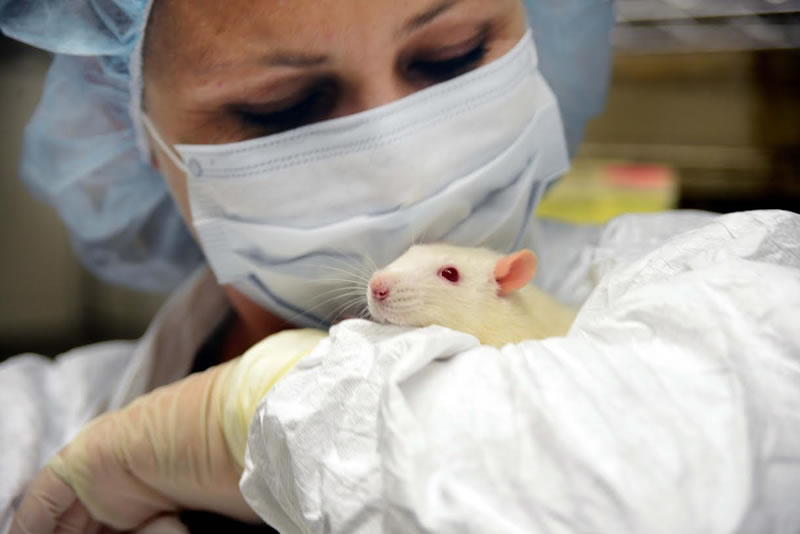
By: Cindy Buckmaster Date: 07/27/2016

By Dr. Cindy Buckmaster, NAIA Board Member and Chair of Americans for Medical Progress
There is a lot of discussion about “animal testing” currently, and whether or not it is truly still required to meet our endless demands for diagnostics, cures and treatments. Perhaps the best place to start in discussing the facts surrounding animals in biomedical research is with the distinction between “animal research” and “animal testing”. Many people use these terms interchangeably, but “animal testing” really only characterizes the latter part of the biomedical discovery process, mainly when candidate treatments are screened for safety and efficacy in animals prior to testing them in humans during clinical trials.
Few people consider or appreciate the amount or complexity of the research that precedes the treatment being “tested”. Virtually every treatment, cure, diagnostic and surgical procedure available today was informed first by decades of “basic research” that involved thousands of researchers and millions of animals. Medical breakthroughs don’t spring suddenly from studies of in-vitro cell cultures, computer simulations and brilliant inspirations. They are the product of years upon years of painstaking, hypothesis driven studies of intact, living systems at gross, microscopic and molecular levels.
Diseases can’t be recognized or remedied without a strong understanding of the biological processes that support normal, healthy organisms, in much the same way that a broken car engine can’t be diagnosed or repaired without an understanding of how the engine is put together when it is working properly. Once a general understanding of the biological processes that support a given life function is acquired, those processes can be manipulated to model and then treat or prevent disease. This often requires a manipulation of the genetic makeup and molecular pathways of organisms, precluding studies of this kind in people. Fortunately, the underlying biological processes that support life functions across species are very similar, allowing researchers to extend findings from studies in animals to people.
Some animals are better suited to model human disease and treatment than others, depending on what is being studied and why. For example, imagine if it were possible to repair traumatic bone injuries with a local injection. How might this benefit the millions of people who suffer serious injuries from car accidents annually, or our war veterans who require amputations because of damage that can’t be addressed suitably on the battlefield? Findings from decades of basic research related to bone formation across multiple species have provided the information necessary for today’s researchers to actually explore this possibility, and a biological preparation has been developed that induces natural bone formation at targeted locations in rodents, safely and reliably1,2. While this may be great news for rodents, this technology will have to be tested in larger animals with greater weight bearing demands, like dogs, pigs, and sheep, before the Food and Drug Administration (FDA) will even consider initiating clinical trials in people. And it may be several more years before this “medical breakthrough” is approved for use by trauma surgeons and battlefield medics.
When that day arrives, however, people around the globe will celebrate this amazing new biotechnology. They will praise the researchers and physicians that made this miracle available to them and their loved ones. And when the global community finally understands that this medical breakthrough, along with the rest, would never have been possible without research animals, they will praise them too, and honor them for their eternal contributions to human and animal health and well-being.
References:

About The Author
 Discover Animals is a web-based educational resource offered by the NAIA
Discover Animals is a web-based educational resource offered by the NAIA